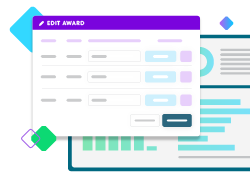Employee burnout was around long before the transition from work to home meant moving to a different cushion on the couch. But with what has felt like one crisis after another, burnout is more prevalent than ever. According to the Aflac 2022 WorkForces Report, more than half of American workers feel at least a moderate sense of burnout.
Add in the fact that employees of nonprofits and grantmaking organizations feel a true sense of purpose that often pushes them to work longer hours with fewer resources than most for-profit companies, and that burnout can be deeper and more pervasive. To have the mental space to devote to your nonprofit and grantmaking mission, employees and organizations alike need to put a focus on workplace wellness.
Digital wellness and leadership coach Meico Marquette Whitlock, also known as the Mindful Techie, outlines why burnout is so widespread in the philanthropic industry and what organizations and employees can do about it.
Drivers of Workplace Stress for Nonprofits
Uncertainty is one of the primary culprits of workplace stress. In his blog post for ENGAGE, Meico Marquette Whitlock encourages nonprofit employees to acknowledge the new reality: that today’s workers have persevered through years of change, each bringing uncertainty and stress.
Not all change is bad, but adjustments to your processes and expectations in the workplace do bring with it a lack of clarity. That is, until everyone gets into the routine of working from home or getting comfortable with video conferencing software, for example. Throw in a good dash of staffing shortages and that uncertainty can breed frustration.
In addition to the uncertainty and frustration around job duties and workplace expectations, we are spending more time in front of a screen than ever before. The close-up eye contact from video meetings can be intense—on your meeting screen, it can feel like everyone is looking directly at you all the time. Plus, seeing yourself on-screen is, at minimum, distracting, and often downright unnerving.
Setting Boundaries to Promote Nonprofit Workplace Wellness
The first step to workplace wellness is to set appropriate boundaries. If you are a nonprofit leader, make sure your employees schedule (and take!) their allotted time off. Clarify what work hours look like and what is expected.
In his Hybrid Workplace Wellness Playbook for Grantmakers, Meico provides tips for teams looking to build a culture of wellness at their organization, including creating a Hybrid Workplace Wellness Plan. This plan lays out those expectations as well as resources available to your employees, so they are easily accessible.
For individuals, Meico also suggests spending some time evaluating your inputs and how they are making you feel. Find your Zoom number—the amount of time you can spend in video conference meetings before you feel drained—and plan your schedule accordingly. Perhaps replace meetings with a phone call or a recorded status update.
Another important focus area for individuals is to make sure your day-to-day work aligns with the legacy you want to build, both professionally and personally. For nonprofit leaders, there is no shortage of important work to be done. But as Meico noted from his own experience getting close to complete burnout, sheer determination can only get you so far.
“After flirting with burnout and exhaustion, I realized I needed to take time to refill regularly because I couldn’t continue to pour into my colleagues and our work from an empty cup. If I wanted to make a positive impact over the long term, I needed to start investing as much in myself as I was investing in my work.”
Workplace wellness is not only the responsibility of the individual, but leaders and employees alike should set the boundaries they need to make sure they have the energy to do the work that needs to be done.
Seven Strategies for Thriving in an Evolving Workplace
If there is one thing we know about nonprofit workplaces, it’s that they will continue to evolve. The needs of your communities will change with the issues that they face—from inflation to health-related issues to environmental pressures. And your needs as nonprofit employees and leadership will need to change with them.
In this discussion, Meico talks through seven evidence-based strategies for individuals and teams to use as you make workplace wellness a priority at your nonprofit organization.
Technology’s Place in a Wellness-Focused Workplace
While technology can exacerbate many of the burnout-inducing struggles nonprofit employees face, it can also help provide flexibility and save you time. Look for ways to automate manual tasks, such as data entry and compiling reports. Not only will you not have the stress of juggling multiple spreadsheets, but it can also free you up for the exciting, deep-thinking work that you enjoy.
Learn more about the role automation can play in your nonprofit office with our blog post, What Nonprofits Should Know about Process Automation.
Manage your entire grantmaking workflow, from online grant applications through payments
Find out how Blackbaud’s Financial Edge NXT fits your organization.

The post Trends in Grantmaking: Workplace Wellness for Grantmakers and the Nonprofits They Support first appeared on The ENGAGE Blog.


0 Commentaires